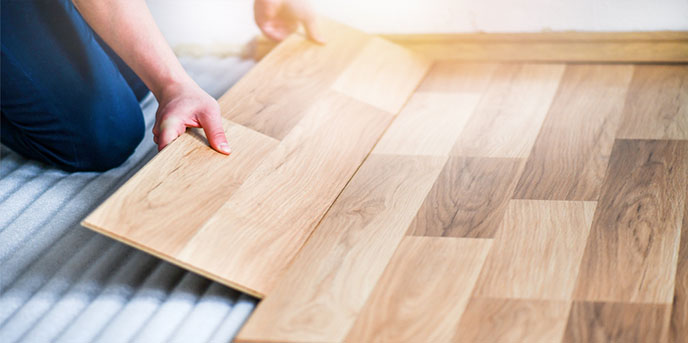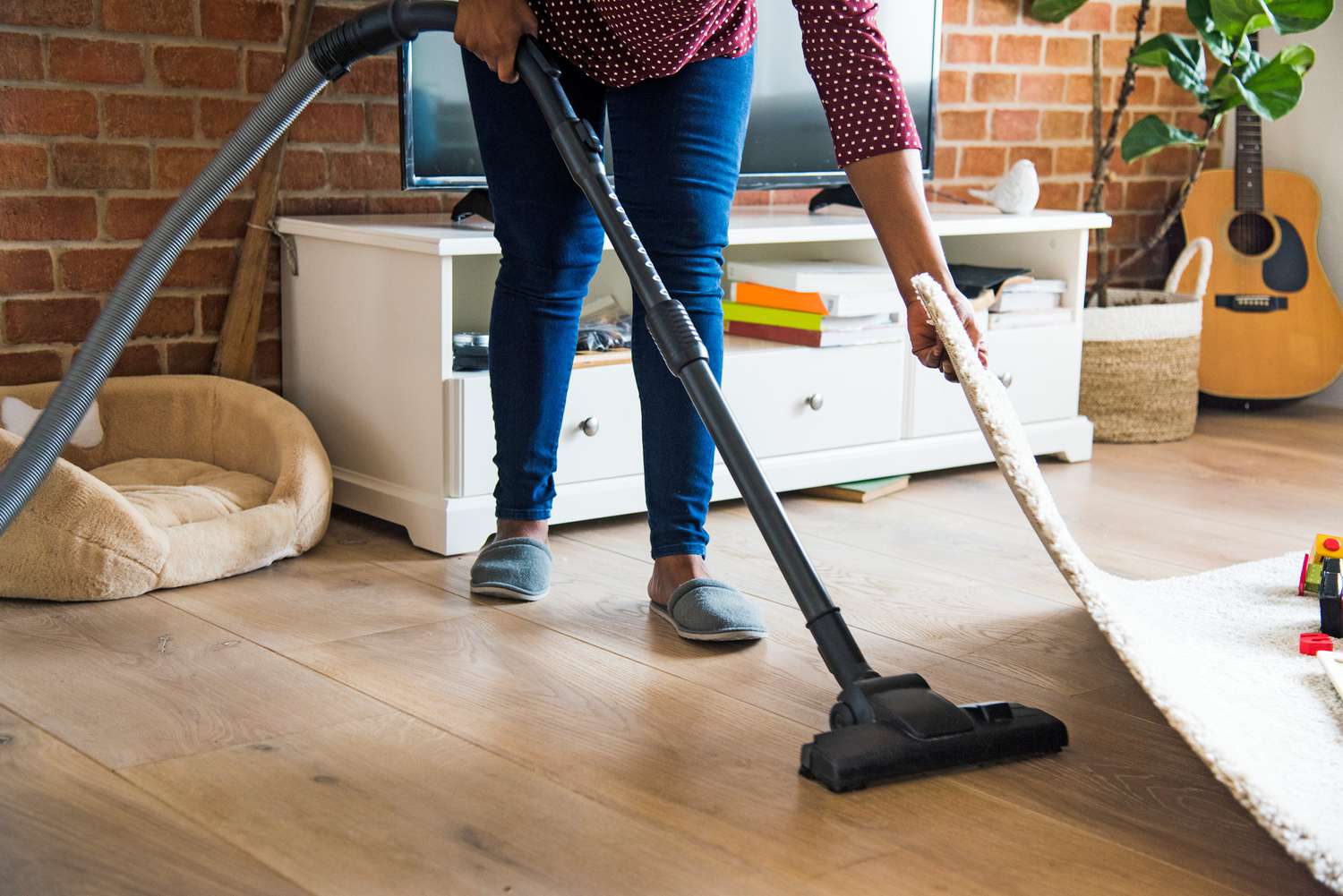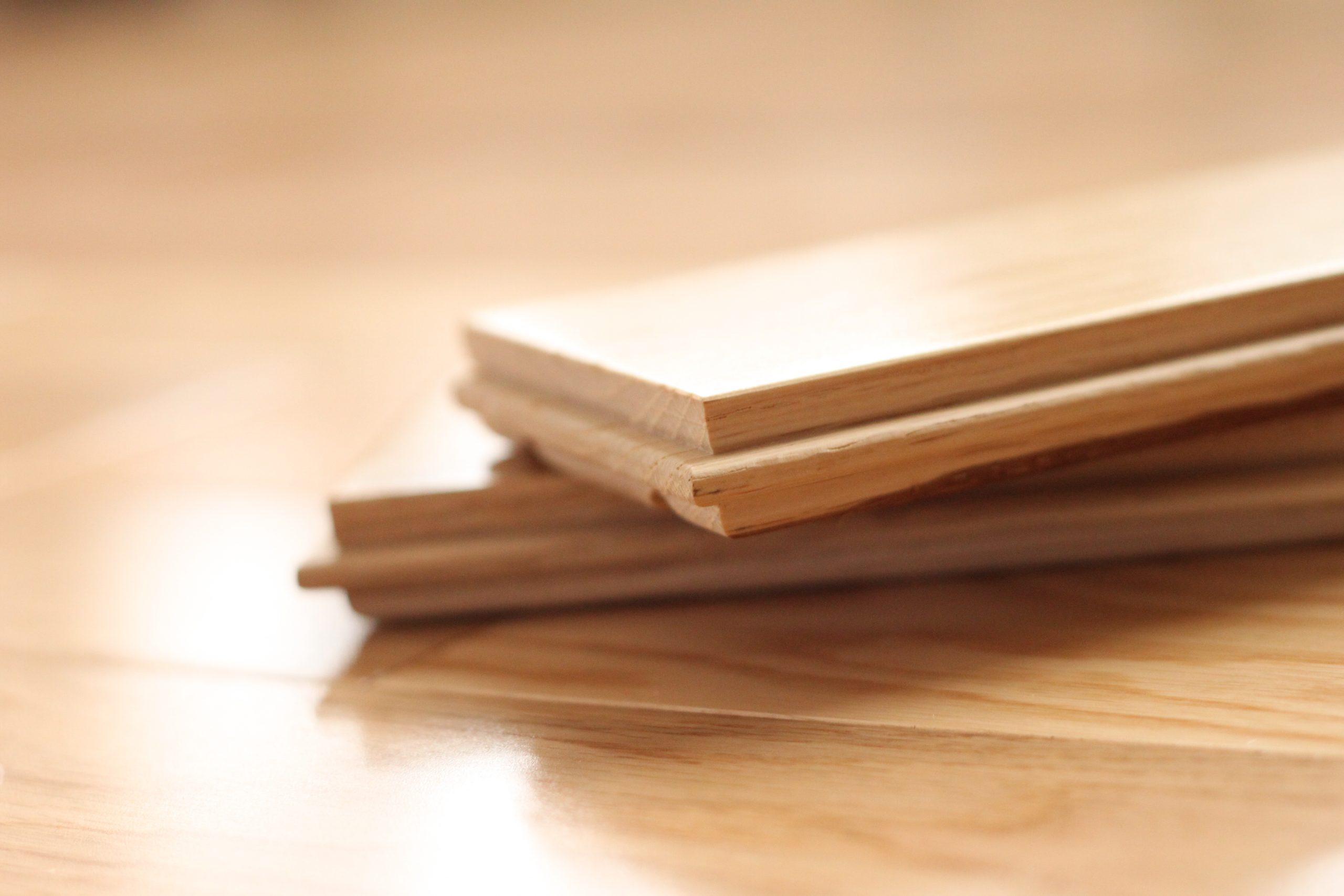Do you know what needs to prepare before installing new floor? It is important to understand what is involved when installing new floor after finding the best flooring dealer and reputable installer. Rather than waiting for the pros to arrive, you should perform a number of chores on your own as a homeowner. There is an especially important reason for this since not all floor installers take the same steps or precautions to prepare your new floors for installation. Even if they are true professionals, it is your responsibility to conduct your own due diligence.

This checklist includes removing baseboards and trim molding in addition to removing furniture and breakable items from the room. If you are planning to have new flooring installed in your home, here are the steps you need to follow to prepare your home before installing new floor. By doing so, you will be able to keep the space clean and ensure a fast installation, allowing you and your family to enjoy new floors immediately.
The Ultimate Checklist Before Installing New Floor
1. Before Installing New Floor: Put away all breakable items
The first thing you should do is remove all items from the room that may break. This includes more than home decor or furniture, as these will have to be moved to another room while the flooring is being installed. Additionally, it refers to lighting fixtures with glass or ceramic bowls.
Make sure you complete this step well in advance before the flooring installers' arrival.
Artwork, mirrors, and family pictures should be removed from the wall. You should also remove the window treatments with long panels. In essence, don't leave anything in the way or breakable in the space!
2. Before Installing New Floor: Decide who will remove the furniture and appliances, and who will add the subfloor

You should always request an all-inclusive project quote from your flooring installer when you receive an estimate for installation. All-inclusive quotes include additional, convenient services such as moving heavy furniture or large appliances in addition to the cost of installation. Additionally, the company might offer additional services such as the preparation of the subfloor or the removal and replacement of the entire floor, if necessary.
Make sure you don't get caught moving heavy furniture and appliances on installation day. Otherwise, you may forget how heavy that armoire is and be forced to call your neighbor for help relocating it in a desperate bid to save your sanity.
3. Before Installing New Floor: Disconnect all gas and electronic appliances
You need to do more than heavy lifting when it comes to your appliances. Ensure that any gas connections and electrical outlets in the rooms where the floor installation takes place are disconnected. It could be anywhere from the kitchen to the laundry room. Many homeowners can perform this task themselves. You should, however, have your gas and electricity disconnected by a professional if you have any doubts.
4. Determine the height of the new floor

Make sure the new floor height is verified before installation begins. If the floor height changes, you may have to adjust the doors as well. Otherwise, your new flooring may make it difficult for you to open and close your door smoothly.
There are a variety of flooring types that can be installed as glue-down or floating floors, such as vinyl flooring and laminate flooring. Adding these floors to an existing floor is convenient, but it also means you must ensure that the doors–both interior and exterior–can swing open and close properly.
5. Organize closets and storage spaces
Don't forget the nooks and crannies when you're preparing for a new floor installation. Ensure that all items from your extra closets and storage areas will be removed prior to the installation of the new flooring. If you are installing new flooring in your entryway, you should clear out the coat closet before installation begins. Empty the pantry and any surrounding areas, such as the laundry room or mudroom, if you are replacing the kitchen floors. When installation day approaches, homeowners tend to overlook these tucked-away areas during preparations. It is common for people to forget to clean their closets and storage areas once heavy furniture and family photos are removed from the walls.
6. Provide Dust Control

During the installation of a new floor, dust can cause problems, particularly when it comes to unfinished hardwood floors. Ideally, a professional will prepare a method to prevent dust particles from sticking to your new floors, but it is advisable to make your own prevention measures just in case.
You should seal off any rooms that will not be sanded. This does not simply mean that doors should be closed, but also that doorways should be covered with plastic sheets and taped with masking tape. It is recommended that you choose something similar to the ZipWall barrier system in order to ensure dust remains contained. You should also pay attention to other escape routes and openings where airborne particles may enter, such as heating ducts.
7. Doors should be removed
Make sure that all doors within the room where the new flooring will be installed are removed from their hinges. While professional flooring installers are aware of the importance of removing and storing doors prior to beginning installation, you should perform this task yourself to ensure each door is properly removed and stored.
You can stack the doors in a closed room once you remove them. Protect your doors against accidental scratches by placing soft blankets between them.
Make sure all hinge pins are stored in an enclosed plastic bag or box. After your new floor has been installed and the pros have left, carefully replace the hinges on each door.
8. Baseboards should be removed

Photo: Home Made Lovely
The baseboards should be removed as well as any additional shoe moldings applied to the bottom edges. You may be able to remove your baseboards with a pry bar depending on the style of your baseboards, such as ranch or colonial.
There are times when it is more convenient to remove the quarter-round shoe molding instead of the entire baseboard if your home's baseboards are tall.
9. Door trim should be removed
Ensure that all case moldings and moldings around the doorways are removed. These areas can become quite problematic if they are not taken care of, even more so than the baseboards. Additionally, flooring installers often cut the bottoms of moldings in order to slip the new flooring beneath rather than remove them. Therefore, as a proud homeowner, it would be beneficial for you to remove the door trim prior to installation. This will improve the appearance of the door frame and allow flooring installers to tightly fit the flooring under it. With the new floor in place, you can then add new molding to your doors or trim the old molding off and reinstall it, giving your room an updated look.
You may want to leave this type of trim work to professionals if you are not experienced with it. It is important to include this type of work in your estimate. Make sure you are clear about what you expect from the visual result.
10. Make sure all floors are thoroughly cleaned

The best practice before installing new floor is to minimize allergens, dust, mold, and mildew. You should inspect the subfloor before starting to ensure that there are no water damage issues. When renovating your basement, it is even a good idea to clean the concrete if you are planning on installing fitness flooring and transforming it into a home gym.
You should clean your floors thoroughly before installing new floors. This will not only ensure that your floors are in good condition, but also ensure that your family is in better health overall.
11. Prepare the Subfloor
As mentioned previously, most floor installers spend little time discussing the subfloor, unless you negotiate and outline this as part of an all-inclusive project. No matter what the case may be, you should check out your subfloor as soon as possible. There are some other imperfections to look for and potential work to be done in addition to having a flat and smooth subfloor free of dips or other flaws. As an example, your subfloor should be fixed in place and completely level with the floor joists. You can be confident that your new floor installation will look flawless and smooth if you prepare the subfloor properly.
Alternatively, you may replace the entire subfloor or at least install a plywood underlayment to smooth out imperfections. You should be aware that if the subfloor conditions are less than ideal, your brand-new floors may not be covered by warranty. It is always a good idea to double-check with your flooring manufacturer about subfloor conditions that could void your warranty. These conditions could range from humidity to debris to stability.
Consult a professional floor installer about what services they can provide you with and what they might add to your project.
12. Check and maintain the interior temperature

The installation of certain flooring requires a suitable temperature or at least an ideal season. There are specific temperature requirements for each type of flooring, which can usually be found on the box, inside the installation instructions, or on the website of the manufacturer.
Acclimatization is a critical step that shouldn't be overlooked. For most flooring products, it takes a day or two for them to acclimate before they can be installed.
During installation, some flooring manufacturers require temperature and relative humidity requirements to be met in the room and on the floor.
13. Set up a cutting area
It is best to create an outside cutting area or, at least, designate and set up an area inside the garage if there is dust. By doing this, you will be able to sweep away sawdust or debris from the ground once the installation is complete. Even if the resilient flooring comes pre-cut, you will still need to cut and install a subfloor, so a separate prep area is helpful.
Prep station cutting areas should have the following:
- GFCI outlet for outdoor use
- Surfaces suitable for hard work (concrete flooring or patios).
- Weather protection or shade
- A good lighting source (natural or work spotlights)
- Home or room entryway
14. Keep your pets safe

Pets should be kept in a secure room or even be watched over by a neighbor. Keeping them away from installers and prep areas will not only prevent them from being frightened but also ensure their job is completed without interruption.
You may want to consider installing a pet-friendly flooring option, such as luxury vinyl planks and tiles since they resist scratches and offer a waterproof barrier to prevent accidental spills.
Ready To Install New Floor?
In conclusion, everything you need to know before installing a new floor... knowing about the preparation before installing new floor can be important for several reasons. First, it can help you make informed decisions about the type of flooring to install, as well as the cost, durability, and maintenance required for different options. Second, understanding the installation process can help you budget for the project and plan for any necessary disruptions to your home or business. Finally, having knowledge about new flooring installation can also be useful for troubleshooting any issues that may arise after the installation is complete. Are you ready for some new stylish floors now that you have a thorough understanding of what goes into flooring installation?
Other flooring blog articles you may want to read:
FACTORS TO CONSIDER BEFORE INSTALLING VINYL FLOOR
VINYL FLOORING INSTALLATION TECHNIQUES
LAMINATE, VINYL, AND ENGINEERED HARDWOOD FLOORING OPTIONS: WHAT MAKES THEM DIFFERENT?
